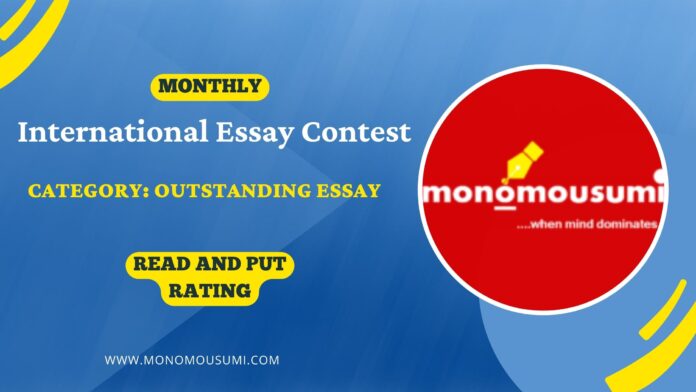Diwali, also known as Deepawali, Deepavali, or Dipavali, is a Hindu festival of light celebrated by many other religions and beliefs, particularly in India. There are several facts about the history of this religious holiday’s commemoration. This commemoration is held in the Hindu Caka calendar month of Aswayuja, which falls between October and November.
Diwali commemorates the victory of good (dharma) over evil (adharma). Light symbolizes good, while darkness represents evil. As a result, this festival is synonymous with lights and lights. The sparkling light that symbolizes joy, as well as hope for life and people, is the hallmark of this celebration. Diwali is often associated with the Festival of Lights.
This joyful celebration includes lighting various sources of lighting, such as traditional lamps or diyas, colorful lamps, lanterns, candles, and even fireworks. Diwali is a big day for those who celebrate it, not just because it is festive with lights. Everyone spreads joy by wearing new clothes, sharing food or candy, and participating in a variety of other enjoyable activities. Diwali typically lasts five days and is filled with various celebrations.
There are Yama Dwitiya and Bhaiduj, as well as Dhanatrayodashi, Naraka Chaturdashi, Lakshmi Puja, Bali Pratipada, and Govardhan Puja. Diwali is strongly associated with Hindu mythology, such as the story of Lord Rama, his wife Dewi Sinta Devi, and brother Laksmana’s return. After 14 years in exile, they returned to their home country of Ayodhya. According to another mythology, Diwali is also celebrated to commemorate Lord Krishna’s victory over the demon Narakasura, who ruled Pragjyotishapura. He was able to set his fearful people free.
India’s Supreme Court has restricted the use of fireworks, which can only be lit for two hours at night during the Diwali Festival. Continuous fireworks in the air will pollute the air and the air will be toxic, especially considering Delhi is the most polluted city in the world. Fireworks that are constantly in the air will pollute the air and the air will be poisonous. However, on November 8 2018, Indian police arrested hundreds of people who were celebrating Diwali with fireworks.
This illustrates that 20 million Indian city dwellers violate the rules that have been set. This they do by organizing a “free night” to set off colorful fireworks. Produces deafening noise and emits five times the safe level of polluted air. At the time, major monuments in Delhi, including India Gate and the Red Fort, were shrouded in a dangerous gray fog. Residents also wear masks to protect themselves. Due to the dust haze, visibility on major roads is only about 50 meters.
Residents should follow the rules that have been set. Due to vehicle and industrial emissions, dust and weather patterns, Delhi is the most polluted capital city in the world. And Diwali fireworks, which occur at the same time, worsen air quality because low wind speeds trap pollutants in the lower atmosphere. The concentration of PM2.5, a small harmful pollutant in the air, reaches 999 parts per million (ppm). The air becomes especially toxic in winter when farmers in neighboring states burn hay. This will have a negative impact on the community itself. Chronic bronchitis, lung cancer, and heart disease are diseases that will be caused by polluted air particles.
Some argue that setting off fireworks on Diwali is an essential part of the celebration and cannot be blamed for the noxious air that causes Delhi to be heavily polluted all year. While there is ample evidence that setting off fireworks will worsen air quality, setting off firecrackers does not appear to be typical of Diwali. Remembering that Diwali is traditionally celebrated by lighting a lamp or candle and praying for prosperity to the goddess of wealth, Dewi Laksmi.
India has the world’s worst air pollution. The country is home to 22 of the world’s 30 most polluted cities. According to experts, toxic air kills over a million people in India each year. In 2017, Delhi had its highest PM2.5 concentration to date, 14 times the World Health Organization’s safe limit (WHO). According to a recent study, 480 million people in northern India are subjected to “the most extreme levels of air pollution in the world.” It also stated that if air pollution in Delhi could be reduced to the WHO guideline standard level of 10 g/m, residents could live up to ten years longer.
The government as the most instrumental should pay more attention to this, air pollution is a significant problem and needs special handling. If the regulations that have been set are still being violated, then with that it should make a law policy regarding penalties for people who light fireworks that are not in accordance with the time that has been decided.
The government must also educate the public regarding the dangers of excessive fireworks being lit. During the socialization, the government explained the determination to light fireworks for 2 hours on the night of the Festival celebration, then explained that fireworks can pollute the air which is fatal for people who inhale them. The government should also limit the sale of fireworks during Diwali. That way, the air will not be polluted. This is one of the good steps to reduce pollution in India. Socialization can make them aware that keeping the air clean is an obligation. They will realize that clean air will keep them away from various diseases.
By: Andinna Septiana Esa Putri
Write and Win: Participate in Creative writing Contest & International Essay Contest and win fabulous prizes.
















